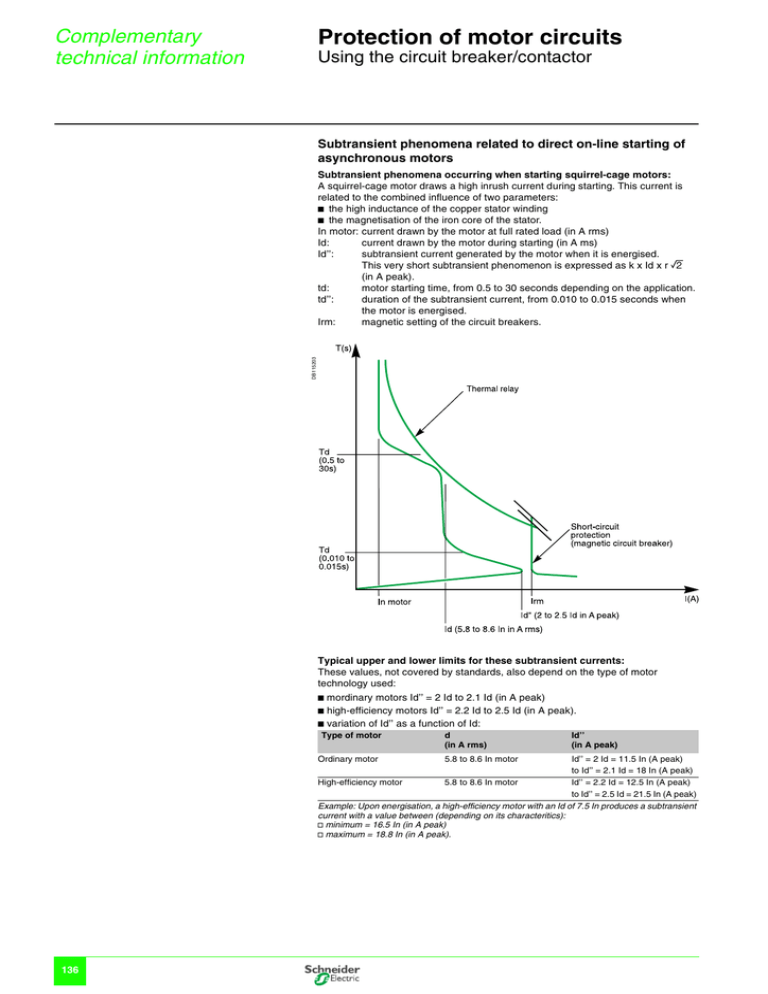Protection of motor circuits
advertisement

Protection of motor circuits Complementary technical information Using the circuit breaker/contactor Subtransient phenomena related to direct on-line starting of asynchronous motors DB115203 Subtransient phenomena occurring when starting squirrel-cage motors: A squirrel-cage motor draws a high inrush current during starting. This current is related to the combined influence of two parameters: b the high inductance of the copper stator winding b the magnetisation of the iron core of the stator. In motor: current drawn by the motor at full rated load (in A rms) Id: current drawn by the motor during starting (in A ms) Id’’: subtransient current generated by the motor when it is energised. This very short subtransient phenomenon is expressed as k x Id x r 2 (in A peak). td: motor starting time, from 0.5 to 30 seconds depending on the application. td’’: duration of the subtransient current, from 0.010 to 0.015 seconds when the motor is energised. Irm: magnetic setting of the circuit breakers. Typical upper and lower limits for these subtransient currents: These values, not covered by standards, also depend on the type of motor technology used: b mordinary motors Id’’ = 2 Id to 2.1 Id (in A peak) b high-efficiency motors Id’’ = 2.2 Id to 2.5 Id (in A peak). b variation of Id’’ as a function of Id: Type of motor Ordinary motor d (in A rms) Id’’ = 2 Id = 11.5 In (A peak) to Id’’ = 2.1 Id = 18 In (A peak) High-efficiency motor 5.8 to 8.6 In motor Id’’ = 2.2 Id = 12.5 In (A peak) to Id’’ = 2.5 Id = 21.5 In (A peak) Example: Upon energisation, a high-efficiency motor with an Id of 7.5 In produces a subtransient current with a value between (depending on its characteritics): v minimum = 16.5 In (in A peak) v maximum = 18.8 In (in A peak). 136 5.8 to 8.6 In motor Id’’ (in A peak) 0



